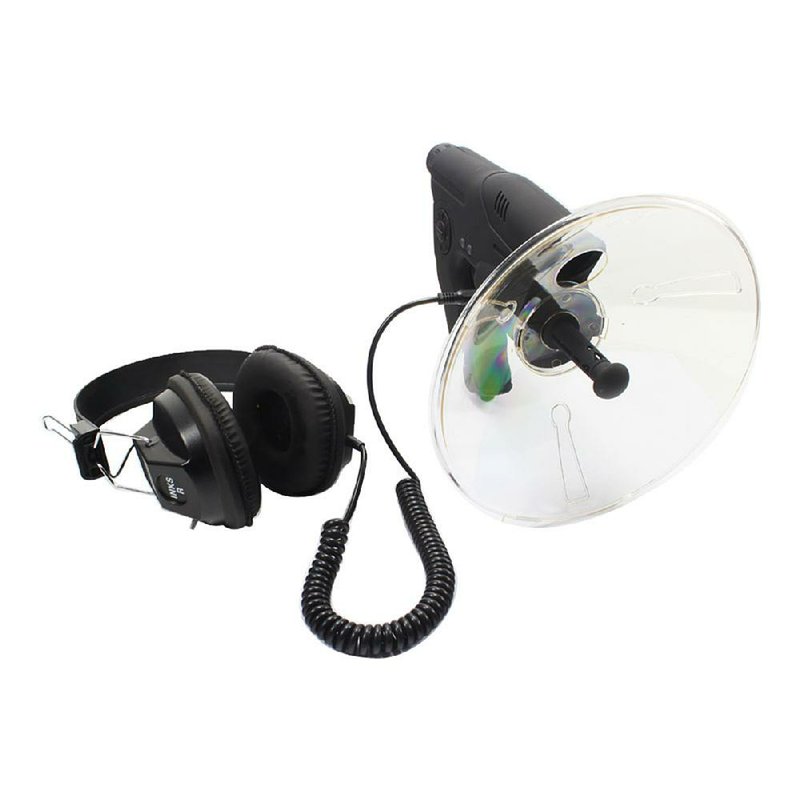LITTLE ROCK — Hobbyists who actively observe birds and pursue them in their natural habitat are most often referred to by the general public as birdwatchers, but they refer to themselves as “birders.” As any birder will explain, birding is much more than just watching birds.
A big part of birding is listening to the birds.
Birders listen to identify species but also for the enjoyment of their songs and calls. In addition, studying the feeding and nesting habits, environmental influences and other issues relating to the health of avian populations is in part accomplished by listening. Birds do not always perch solo on telephone wires but are tucked away - in the topmost branches of trees, behind grassland reeds, inside old buildings. Sometimes the only way to identify species is by listening.
Many birders are very proficient at identifying species by their individual calls, and some are quite adept at mimicking songs and calls. For those of us who do not possess these skills or who have lost some of our hearing, there is help to be had from technology.
First let us look at devices designed for the person with average hearing. These
tools usually consist of a handheld, unidirectional microphone, which can be pointed toward the target to amplify sound, and a receiver such as earphones or earbuds.
The type of receiver is an individual’s choice; some folks do not like to wear earphones and others cannot tolerate inserts. Either will serve to reduce unwanted sound in the ears (or ear) they are worn on or in, and this further improves the signal-to-noise ratio (bird call vs.
ambient sounds, for instance) of the device.
Most ear-worn devices will reduce sound in general by only a few decibels - not enough to interfere with communication with others and certainly not enough to interfere with sounds indicating danger.
Even a small reduction in ambient sound - the competing sounds coming at you from all around - will clarify a sound you’re trying to hear better, and combined with the amplification provided by the device, will greatly improve the signal clarity. Most of these devices look like a small backyard satellite TV dish with a pistol grip. The unidirectional microphone is encased in foam rubber for wind-noise reduction and is mounted in the center of a 6- to 8-inch-diameter dish. A major feature to look for is weight; the lighter the better.
One example is the Bionic Ear (available for less than $50); it promises to amplify sounds up to 30 meters (about 98 feet) away and includes an 8x monocular viewing lens for spotting birds.
Some of these units have a short recording feature for capturing a bird song or call for later identification. Weighing less than 2 pounds, the Wolfcom Orbitor Parabolic Microphone Electronic Listening Device with headphones ($40-$50) runs on a 9-volt battery. It is made by a company that also makes much more expensive “spy” gadgets. It can record sounds and has a viewfinder.
Since most birders own several pairs of binoculars, one manufacturer (Sonic Technology) offers a microphone that can be attached to the side of them; thus the microphone is always pointing in the direction you are looking. The Sonic Super Ear Amplifier runs on two AAA batteries and comes in two versions, $40 or $80; it weighs about 3 ounces.
A listening device aimed at homeowners with normal hearing is Nature’s Window 3 Outdoor Monitor ($60 to $150), a rectangular box containing speakers that is connected to an outdoor microphone. It lets you monitor sounds of birds outside the window; the unit runs on household current.
Some devices provide audio libraries for immediate comparison in the field. These are also available in smart phone applications. A popular app is iBird, but each of the organizations that produces a birding field guide has an app - Audubon, National Geographic, Peterson and Sibley; these range from $5 to $20. Some are more complete than others, with more songs per bird and so forth; each user should investigate options before buying.
WHERE ARE THEY?
My research finds these devices are readily available through Internet dealers, but although I didn’t see any in my area, shops in some parts of Arkansas might stock the less expensive brands. One place to begin looking, apart from birding supply shops and outdoor outfitters, would be stores that carry “spy” gadgets.
Remember that these devices presuppose the user has average hearing, and it’s not necessary to consult an audiologist to buy one. However, for the hearing-impaired individual who is already wearing a hearing aid, consulting the audiologist could be of help. For instance, one of the devices I spotted online suggested that it produced 107 decibels, a level that can be very loud for certain hearing impairments.
THE HEARING IMPAIRED BIRDER
The devices marketed for people with average hearing typically have either a flat frequency response (sounds of all frequencies amplified at the same volume) or a slight high-frequency emphasis, as they are designed for the masses.
Listeners who have difficulty hearing in their daily lives will need amplification systems that are designed for their hearing loss - that is, more amplification in some frequencies and less or none in other ranges; and the hearing impaired will also need noise-reduction systems and other features specific to the needs of the individual. Everybody is different.
Many hearing aids make several program settings available to the user, and each program can be adjusted for specific listening environments: one program for the workplace, a second for watching TV in the evening, another for the great outdoors.
If you can provide some information about the frequency range of the bird songs and calls, an audiologist can create a specific program for birding, or a couple of programs.
For example, a few years ago, a colleague had a patient who was an avid turkey hunter but was having trouble hearing the turkeys in the field. This hunter learned the frequency range of turkey calls from his hunting association, and so the audiologist set one program for hearing a turkey gobble. The patient used it with great success.
Most digital hearing aids can store a half-dozen different programs. While these personal devices are quite expensive, people who already have a digital aid for daily assistance will find that the configuring of a program for bird-listening adds no additional cost.
Ultimately the choice of assistive listening devices is an individual one, but they can make any experience richer and this certainly is true for the birder or even the backyard birdwatcher.
Mark Weatherton is an emeritus professor of audiology for the department of audiology and speech pathology at the University of Arkansas for Medical Sciences.
Amplifiers aid older birders
Most of us start life with the ability to hear sounds as soft as the “0 decibels” hearing level across a frequency range of 20 to 20,000 hertz (or cycles per second). But we soon begin to lose hearing in the upper ranges.
Few young adults hear much in the 8,000 hertz to 12,000 hertz range; by middle age, this range is significantly reduced or completely absent.
Thus we start losing our hearing soon after we are born. Generally we do not become aware of the loss until it dips below 4,000 hertz. A conservative estimate is that 60 percent of senior citizens have significant hearing loss.
Most of these older listeners suffer from a condition known as presbycusis - simply put, they lose hearing as they age. This is characterized by a very gradual high-frequency hearing loss often starting in middle age and first noticed in the late 50s.
It typically begins to interfere with daily communication by age 65.
Meanwhile, The senior citizen population in America is fast approaching 50 million. The U.S. Fish and Wildlife Agency has estimated that 20 percent of Americans engage in birdwatching each year. Do some math, and you can conclude that we have 10 million older Americans involved in birding. Even if we went with a more conservative number - say, 5 million - there would be approximately 3 million older birders who could benefit from assistive listening devices.
- Mark Weatherton
ActiveStyle, Pages 23 on 02/11/2013


